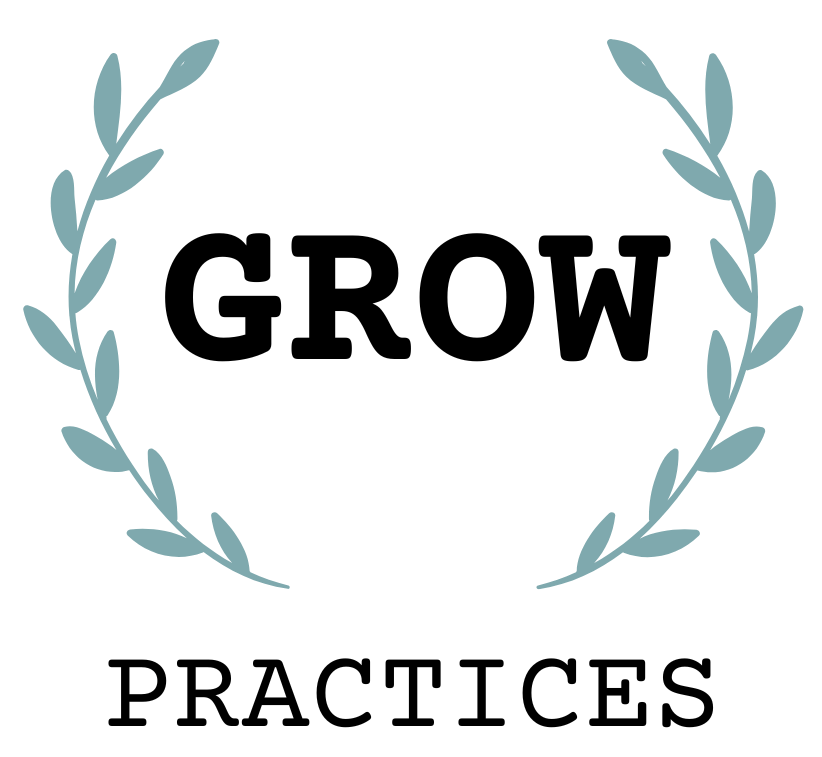
Equity in Learning
Equity in education focuses on achievement, fairness, and opportunity in learning.
How to GROW at Wentworth
TLC is proud to support the work of Wentworth’s Equity in Learning Group by promoting the GROW Practices in all Wentworth classrooms. The GROW Practices are a set of four evidence-based principles instructors can adopt to close equity gaps in the classroom and provide a more personalized learning experience to students. The GROW Practices align with our university’s equity in learning goals and are supported by best practices from inclusive instructional design.
Start With Your Syllabus
These syllabus resources were designed for compatibility with the GROW practices. Use them to get started with improving equity in learning in your classroom:
- 2023-24 Inclusive Syllabus Template Undergraduate [Doc]
- 2023-24 Inclusive Syllabus Template Graduate [Doc]
- Inclusive Syllabus Rubric [Doc]
Will you help us improve these syllabus templates? If you or your students have any suggestions, please complete this brief survey so we can work towards awareness, self-reflection, and continuous improvement. Check out tips to introduce your syllabus at the beginning of the term.
GROW Practices Explained
Grow Relationships
Relationships form the foundation of an inclusive classroom, and they are drastically affected by the expectations communicated and modeled throughout the course. This practice is aimed at establishing a “student-centered” classroom climate by promoting meaningful positive relationships in faculty-to-student and student-to-student interactions.
Try these:
- Use the inclusive syllabus template (above) to create a syllabus with a welcoming tone and clear expectations for your class
- Administer a Who’s In Class survey so you can learn more about your group of students and their needs
- Include an introduction activity in your first day of class
- Share your pronouns; invite others to share theirs as well
- State your student availability hours and check in on students regularly

Reimagine Representation
Representation in course content helps shape student autonomy and professional identity. As stated by Ambrose et al. (2010), “content can affect learning through cognitive, motivational, and socioemotional mechanisms because it determines what is and is not learned and how meaningful the material and the field are to students” (p. 179). Ultimately, course content holds tremendous power in allowing students to see themselves in the field as successful contributors.
Try these:
- Feature manuscripts, textbooks, and other materials from authors who are traditionally underrepresented in the field
- Incorporate case studies that address cultural and/or socioeconomic issues and disparities
- Select diverse images that enable students to “see themselves” in the field
- Let students choose personally meaningful topics of interest to study and share in class
Optimize Learning Through Accessibility
A “personalized” approach to learning aids in reducing equity gaps that exist within diverse student populations and includes recognizing the diversity in learners’ abilities. Accessible practices are essential for allowing students with documented disabilities to participate in equivalent experiences as their peers, but accessible practices do more than just accommodate. Accessible practices benefit everyone because they create multiple means of representation, engagement, and expression in the classroom. When you engage in accessible practices, “difference” becomes a strength, not a deficit.
Try these:
- Use the “Plus-One” approach to integrate a new Universal Design for Learning (UDL) strategy into your classroom each semester
- Use Panorama through Brightspace to evaluate the accessibility of digital content in your course
- Link your course materials from the Schumann Library and place essential items on reserve
- Create opportunities for students to participate in virtual discussions outside of class sessions
Work Towards Awareness and Self Reflection
It is important for faculty to recognize that the journey toward equity and inclusion in classrooms is not instantaneous. It requires us to be aware of any constraints that limit our ability to practice these inclusive principles and to reflect on how we can improve the overall learning experience for all students.
Try these:
- Engage in Project Implicit to better understand your own potential implicit biases
- Administer a mid-semester survey to students so you can check your classroom climate
- Request a course observation from a TLC ID to get friendly feedback on classroom techniques
- Request a TLC Teaching Reflection Journal by emailing teach@wit.edu
Glossary
Academic Integrity
Members of our community are expected to be honest and forthright in all their academic endeavors. Not only does this add value and credibility to a Wentworth degree, but it also establishes trust and respect as we share knowledge within and beyond our community. Academic integrity includes:
- Acknowledging the work of others with citations and attributions
- Submitting work that authentically reflects your own knowledge, skills, and abilities – not someone else’s
- Collaborating with others on work only when collaborating is an intended part of the activity
- Respecting each other’s work, property, and possessions
Questions about academic integrity at Wentworth? Need to log an incident? Review Wentworth’s Academic Honesty Policy Procedures.
Accessibility
The act of “providing students with disabilities the opportunity to acquire the same information, engage in the same interactions, and enjoy the same services as students without disabilities, with substantially equivalent ease of use” (CAST, 2022).
At Wentworth: Students with physical, medical, psychiatric, and learning disabilities are eligible to utilize Student Accessibility Services (a branch of the Success Studio) to arrange for reasonable accommodations and seek ongoing support at any point in their Wentworth career. All instructors, however, are encouraged to adopt accessible practices in the classroom to reduce barriers to learning, participation, and engagement.
Diversity
Individual and group differences that can be visible and invisible in context. Diversity relates to “how learners differ from one another with regard to their social identities, demographics, perspectives, prior experiences, attitudes, knowledge, skills, and other attributes” (Addy et al. 2021).
Equity
The quality of being fair and impartial, not by treating every learner as the same but by recognizing learner differences and creating a classroom that embraces and utilizes those differences to improve learning for all.
“Equality in teaching and learning suggests that all students should have identical learning experiences regardless of their difference… Equity acknowledges the differences between learners, their diversity, and the types of learning environments that help diverse students succeed” (Addy et al. 2021).
Inclusion
A deliberate commitment to accepting, valuing, and respecting differences. Inclusion “refers to creating a welcoming environment and intentionally not excluding any learners” (Addy et al. 2021).
Non-Discrimination
Per Wentworth’s Office of Institutional Equity: “Wentworth Institute of Technology values diversity, equity, and inclusion. The University is committed to providing a safe and respectful educational experience and work environment free from discrimination and harassment on the basis of an individual’s race, color, religion, gender, age, marital status, national origin, ancestry, alienage, physical or mental disability, sexual orientation, gender identity or expression, genetic information or any other characteristic protected by law.”
Resources
This website was created to communicate the findings from Wentworth’s Division of Academic Affairs and Office of the Provost’s Our Journey: The Value and Practice of Equity and Inclusion in Learning (2021). For additional support with promoting equity in learning, click the plus icon to explore helpful references and resources:
Wentworth Organizations
- Office of Institutional Equity: This office supports the university in cultivating and maintaining a campus environment that is equitable, inclusive and accessible. Students, faculty, staff and guests have a right to be free from discrimination and harassment, including harassment and sexual misconduct.
- Center for Diversity and Global Engagement: CDGE programs at Wentworth promote cross-cultural perspectives, inclusivity, leadership development and personal growth among the Wentworth community, and fosters a welcoming, brave and safe environment for all students with a specific focus on underserved populations and their allies.
- Center for Wellness: The Center for Wellness is comprised of Counseling Services, Health Promotion and Education, as well as Fitness and Wellness Programs. Each provides specific services to our students while working together holistically to improve students’ experiences.
- Schumann Library & Learning Commons: The Schumann Library provides numerous on-campus and virtual services to the Wentworth community, including an extensive library catalog, research support, study spaces, copyright guides, and more.
- Success Studio: The Success Studio acts as the central hub dedicated to helping our students thrive through the provision of Academic Support, Advising Services, and Student Accessibility Services.
- Teaching & Learning Collaborative: Partners to your best teaching, the TLC team consists of passionate educators who promote inclusive, engaging, evidence-based educational experiences at Wentworth.
Books, Websites, More
- Addy, T. M., Dube, D., Mitchell, K. A., & SoRelle, M. E. (2021). What inclusive instructors do: Principles and practices for excellence in college teaching. Stylus Publishing. Accessed through the Schumann Library.
- Ambrose, S. A., Bridges, M. W., DiPietro, M. Lovett, M. C., & Norman, M. K. (2010). How learning works: Seven research-based principles for smart teaching. Jossey-Bass. Accessed through the Schumann Library.
- Blackboard (2022). Ally for Learning Management Systems help. Retrieved from help.blackboard.com/Ally/Ally_for_LMS.
- CAST (2018). Universal design for learning guidelines version 2.2. Retrieved from udlguidelines.cast.org.
- Tobin, T. J., & Behling, K. T. (2018). Reach everyone, teach everyone: Universal design for learning in higher education. Morganton. Accessed through the Schumann Library.
